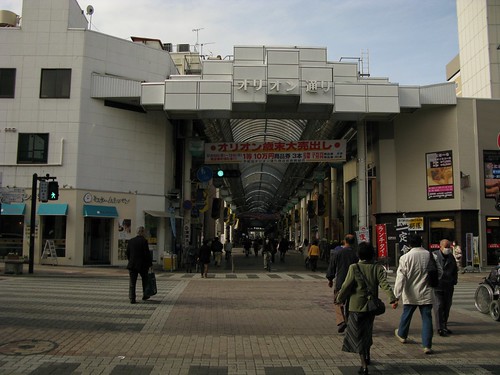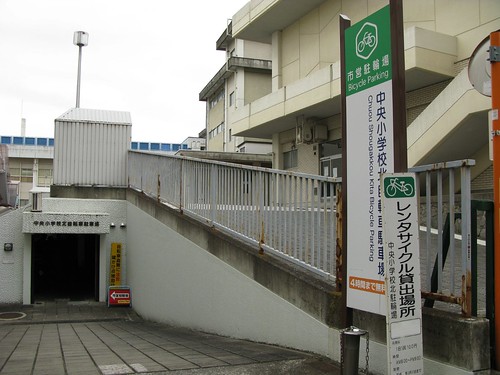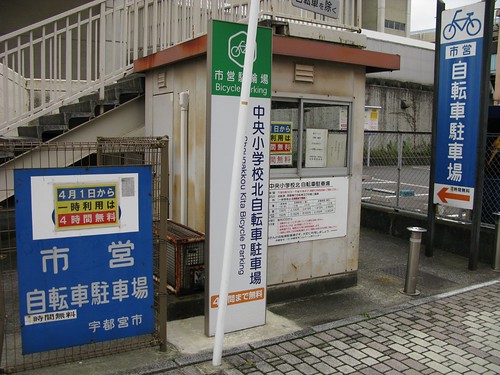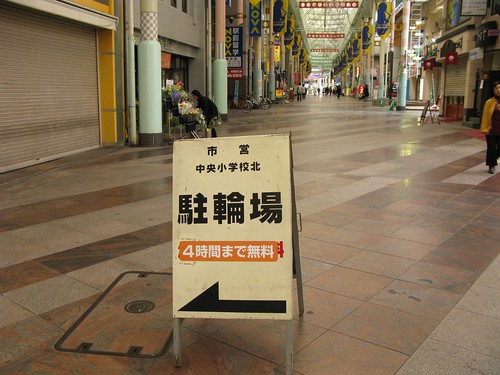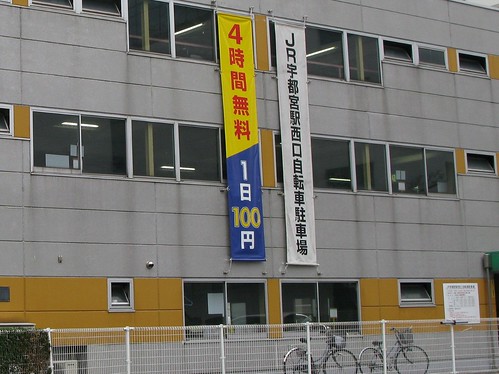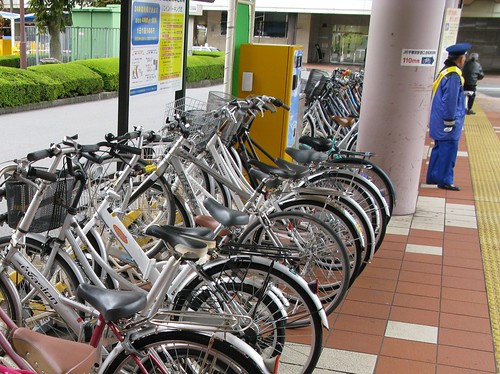Across Japan, cities have begun taking more aggressive action to control negative bicycle behavior, while encouraging the high rates of cycling. Utsunomiya, capital of Tochigi Prefecture, is no different.
As a mid-sized city separated from Tokyo by a one-hour bullet train ride, Utsunomiya has a surprising desire for experimentation.
The good: 17% of trips in Utsunomiya are by bike, above average for cities other than Nagoya, Osaka, and Tokyo. When both origin and destination are within Utsunomiya, bike share jumps to 22%. More than half of high school students commute by bike.
The bad: That ride share has been sliding since the mid-70s, the start of Japan's personal transportation motorization and a continued automobile focus in traffic engineering. Moreover, bicyclists are seen as not doing their part to maintain a well-mannered, safe city. Over 7000 bicycles are impounded each year for illegal parking in Utsunomiya. More than 20% of accidents involve bicycles (23% in 2008). More than half of those responsible for bicycle accidents are youth (through high school) or elderly. Bicyclists have lopsided demographics: over a third of bicycle riders are under the age of 18. In particular, men are almost all under the age of 18, while women tend to be 30-50.
In 2006, a group of students in a community development ("machizukuri," the soft term for urban planning) class at Utsunomiya University took a look at safety issues involving bicycles, and came up with a series of proposals which were presented to the city. To their credit, most of their recommendations were put into effect. Some of the ideas may have been the result of field work conversations with officials, but the students really hit the nail on the head.
During their study, the sidewalks around the JR Utsunomiya Station, Tobu Utsunomiya Station and the car-free shopping district in between (see map) were cramped with parked bikes, and rude bicyclists terrorized the elderly and young children.
They discovered that city-owned bicycle parking structures lay underutilized just steps from the shopping district, and their intervention focused on moving bicycles from the street into the lots. From 1993 to 2005, usage levels dropped dramatically, one of them going from 60% occupancy rate down to 8%. The student group conducted a survey which revealed that although people parked their bikes right in front of (and blocking) the signs for the lots, no one knew where they were. A survey of fellow students at Utsunomiya University revealed that almost all of them visited the shopping area by bicycle, most of them parked their bike blocking the street, and nine out of ten had no idea city parking lots existed.
The community development students proposed several strategies. Signage would be improved with clearer messaging, more eye-catching design, and more conspicuous placement. Flower pots left along railing and next to benches would prevent bikes blocking pedestrians. High school students would be assigned to walk the shopping district, asking people not to park illegally.
They also invented a program targeted directly at people doing their daily shopping. A discount program would give a 100 yen (about $1) discount coupon to each bicycle parker, which could be redeemed at the shopping district. So cyclists who made use of the parking lots for short trips not only park for free, they also would get a 100 yen bonus. This was proposed as a double win for the city, because big box stores on the outskirts of town have been drawing business away from the historic shopping core.
Although the text is in Japanese, photos from their field research can be found in their PowerPoint presentation
Outcomes
In comparing their suggestions to the changes in Utsunomiya in the intervening three years, I would like to start with the wild idea of paying cyclists to park in a garage. The city and shopping district business association have not implemented it. But I discovered something amazing while trying to understand how the private-owned parking lots work in Utsunomiya. Attached to JR Utsunomiya Station is the JR-owned department shopping tower Paseo. Paseo has an automobile parking garage, and they validate parking for up to 450 yen ($5). Here's the great part. If the shopper shows proof that they parked in one of the city bicycle parking garages (for free) near the station, they can get the cash equivalent of the validation. Awesome!
What about the other proposals?
They certainly got their improved signage. Large signs with large letters, clearly pointing out the location of the garages and even sitting in the middle of the walkway that bicyclists used to terrorize.
The city also added low-profile vertical signs to utility poles which suggest "let's make wider use of the street" throughout the shopping district.
The "don't park there" and "ride safely" patrols have been started, made up of high school students along with police and members of the community. A photo of them in action can be found here.
Rather than installing flower pots to dissuade illegal parking, the city took three other tactics.
First, a carrot. Working together with the train lines, they extended the free parking length from two to four hours, and dropped the daily price to 100 yen ($1).
Second, alternatives. Recognizing that people who felt rushed still would not use the lots, they introduced short-term, pay parking machines which block illegal parking while taking up less space.
The other alternative was the conversion of car space into bicycle parking, so that pedestrians aren't affected and bicycles can drop their bikes without entering the garage.
The third tactic was guilt. City and rail company employees patrol problem areas, watching for illegal parking and providing meter assistance as well.
Next up for Utsunomiya is a formal network of bicycle routes, a new and positive trend for Japan.
Earlier this year an experimental stretch of separated bicycle path was built out in the less developed, wide- streeted eastern part of town.
I'll talk another time a bit more about other efforts to reduce car dependency in Utsunomiya. For now, here is a link with more information about Utsunomiya's bike programs and policies, in Japanese.
